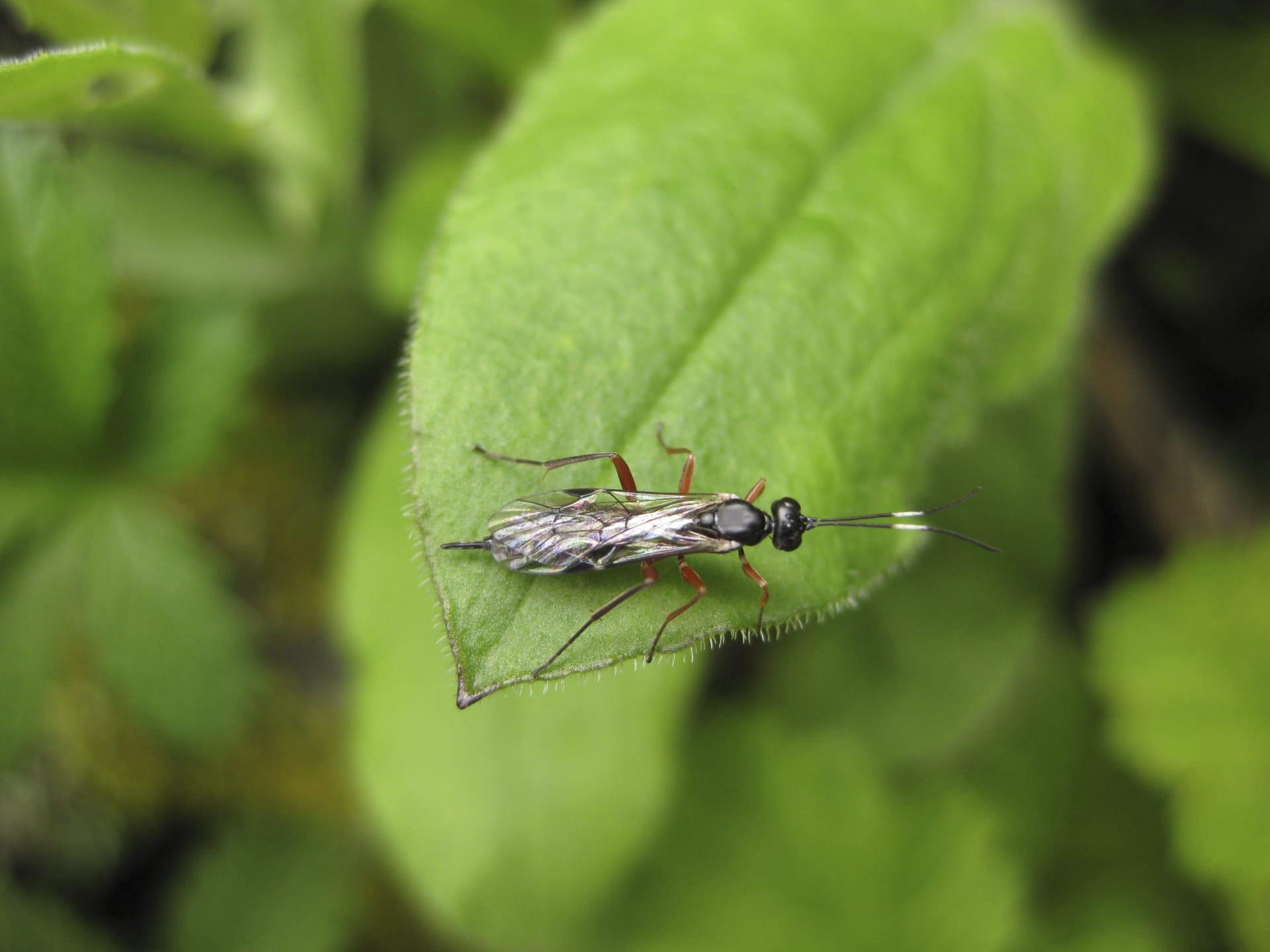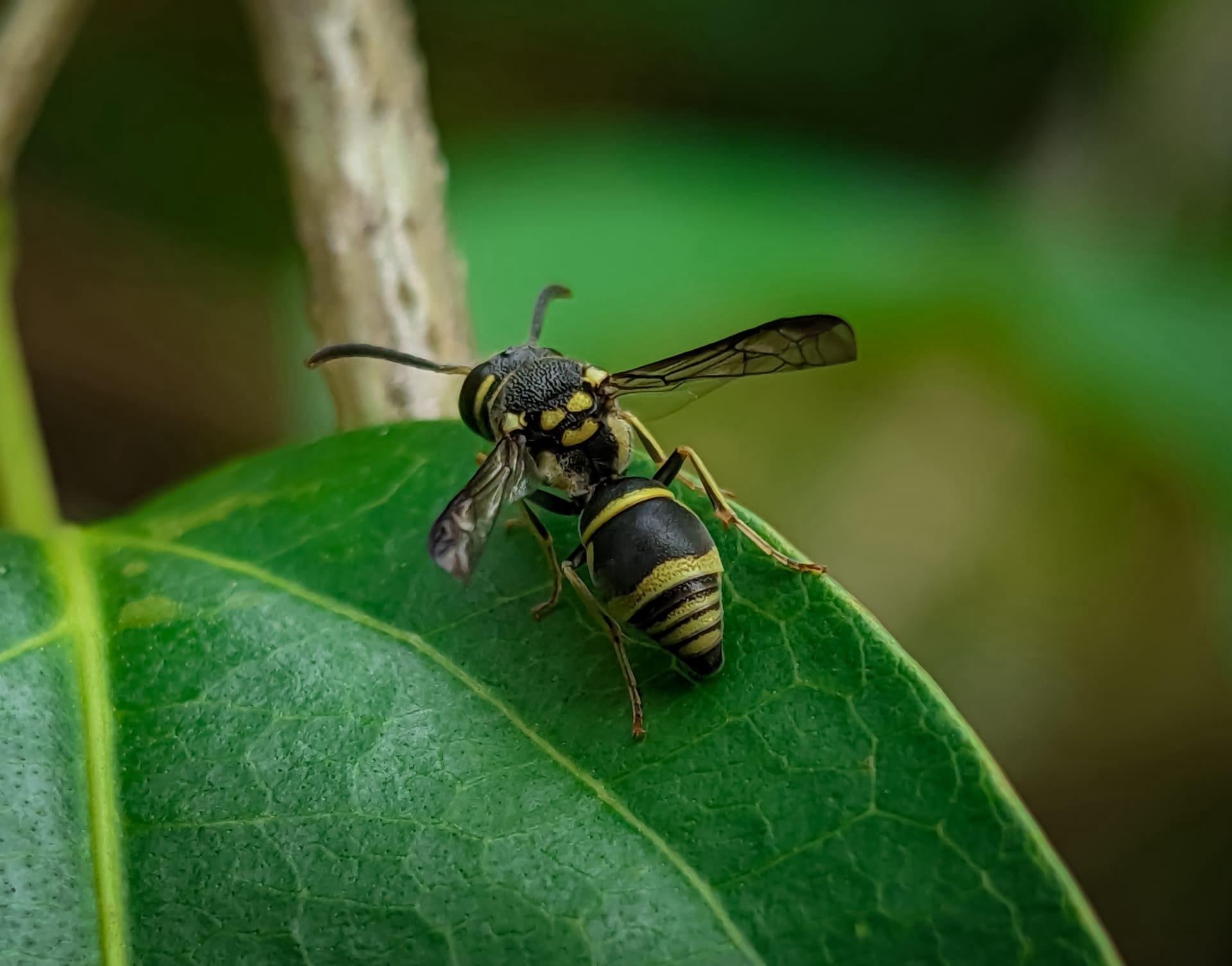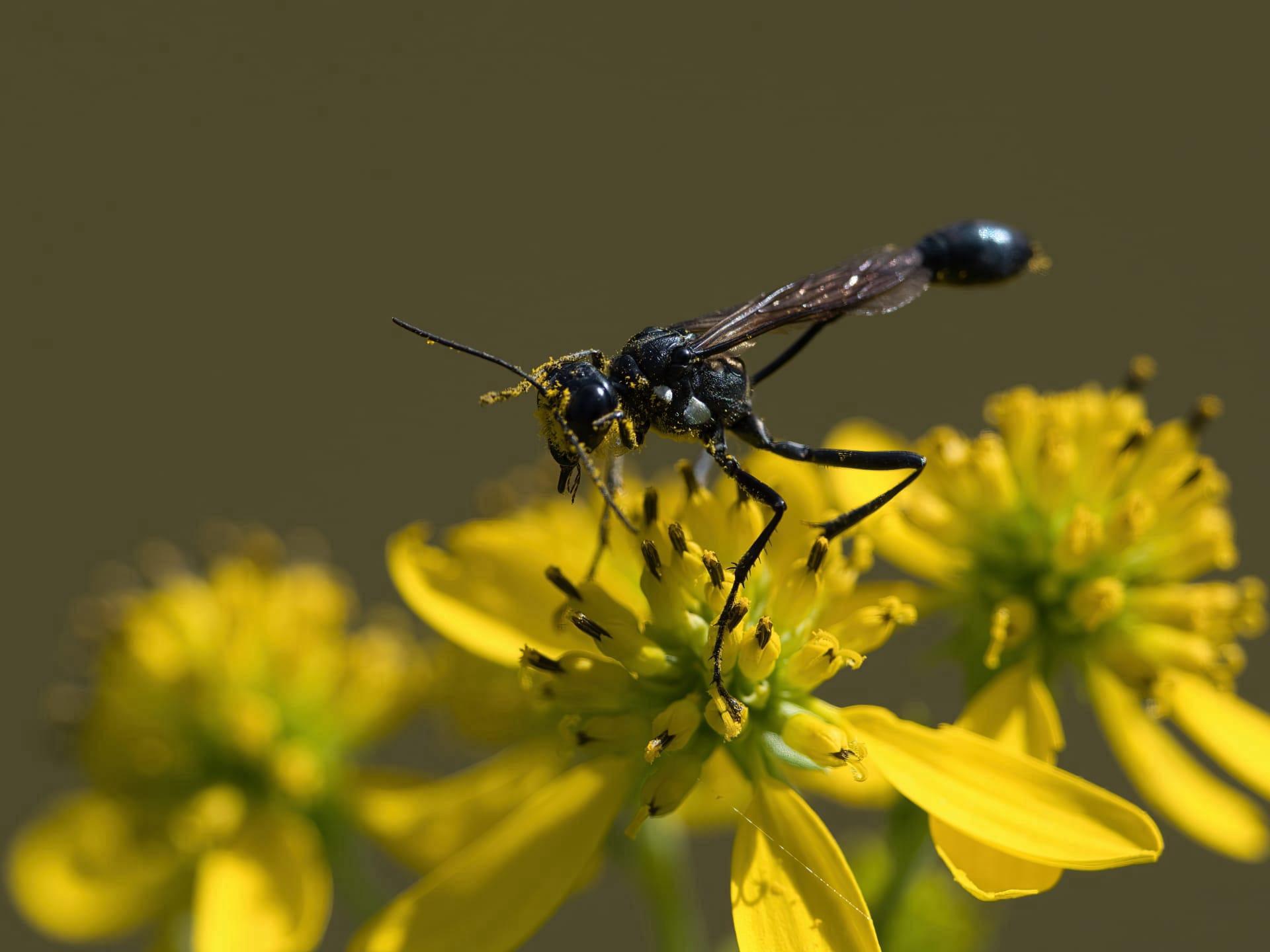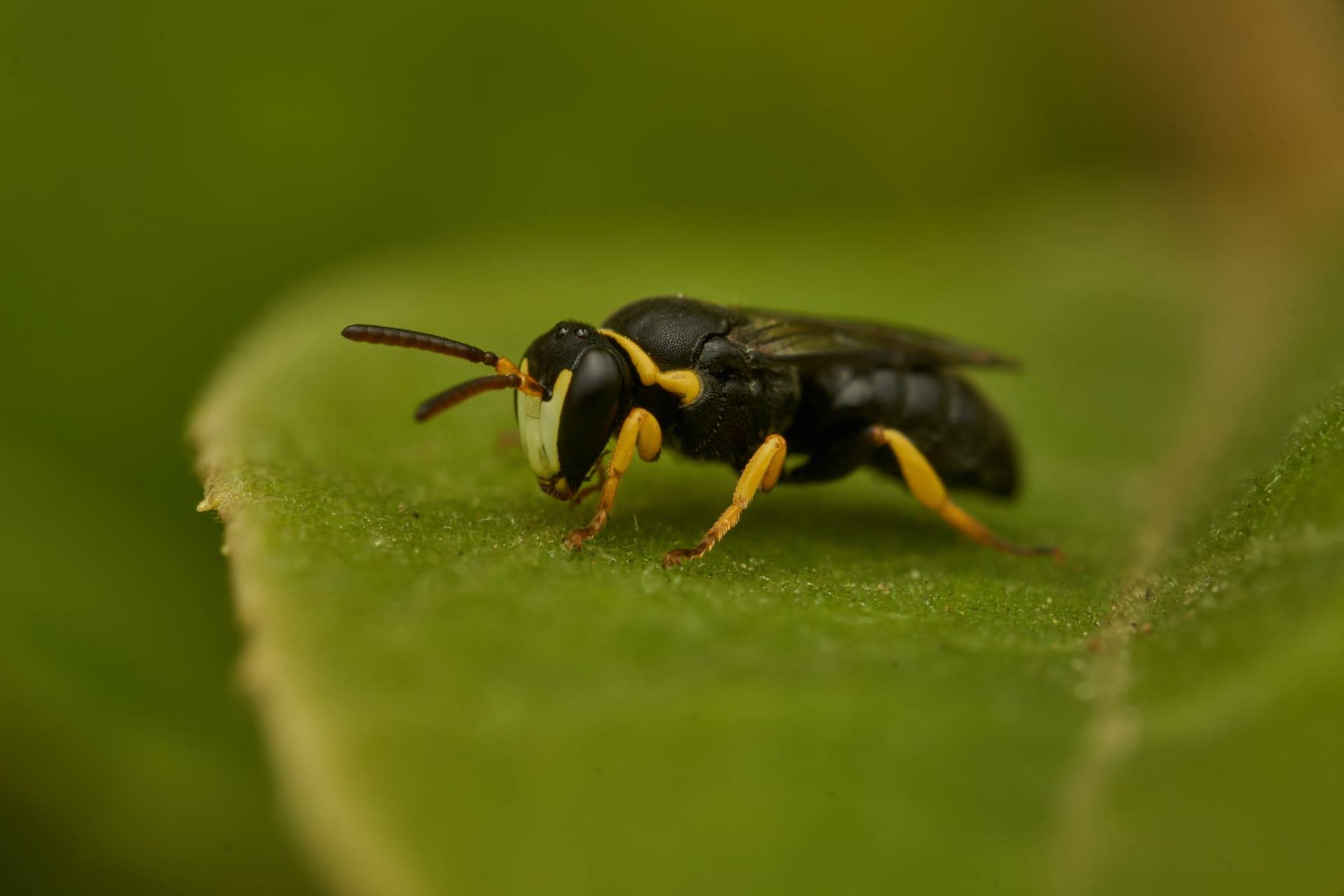Black Wasp Characteristics
- Home /
- Mini Encyclopedia /
- Animal /
- Black Wasp Characteristics
1
Black Wasps, scientifically known as Sphex pensylvanicus, exhibit a striking appearance with their sleek black bodies contrasted by sparse yellow markings. These insects typically measure about 1 to 1.5 inches (2.5 to 3.8 cm) in length. Their lifespan varies, with adults living for about 22 days on average, though this can extend to several weeks under optimal conditions. An intriguing aspect of their anatomy is their elongated antennae, spanning about one-third of their body length, which play a crucial role in navigation and sensory perception.
The most distinctive organ of the Black Wasp is its stinger, used primarily for subduing prey rather than defense. This stinger injects a paralyzing venom, allowing the wasp to capture and transport live prey, such as grasshoppers and crickets, back to its nest. The venom's composition is uniquely adapted to target the nervous system of its prey, rendering them immobile but alive, ensuring fresh food for the wasp's larvae.

2
Question: What do Black Wasps eat?
Answer: Black Wasps, being predators, primarily feed on insects such as grasshoppers, crickets, and other small arthropods. The adults often consume nectar from flowers, showcasing their role in pollination. However, their hunting prowess is most evident when they capture and paralyze prey for their offspring. The larvae feed exclusively on the fresh, living prey provided by the adult wasps, which is crucial for their growth and development.

3
Black Wasps demonstrate remarkable agility in flight, characterized by rapid, precise movements. They are adept at hovering and quick turns, aiding in both hunting and evasion from predators. Their flight speed can reach up to 12 miles per hour (19.3 km/h), and they are known for their distinctive flight pattern that includes short periods of hovering interspersed with swift, linear movements.
In terms of feeding habits, adult Black Wasps are commonly seen visiting flowers, where they consume nectar. This nectar serves as a vital energy source, fueling their active lifestyle. Their larvae, however, have a carnivorous diet, relying entirely on the paralyzed insects brought to them by the adults. This unique feeding strategy ensures that the larvae have a consistent supply of fresh, nutrient-rich food.

4
The Black Wasp thrives in a variety of environments, ranging from gardens and meadows to forests and grasslands. They prefer habitats that provide abundant prey and floral resources for nectar. The presence of bare soil is also crucial as they often build their nests underground.
Reproduction for Black Wasps involves a fascinating process. Females construct burrows in the ground as nests, each compartment housing a single egg alongside paralyzed prey. This ensures that upon hatching, the larvae have immediate access to food. The female meticulously seals each compartment, providing a safe and nourishing environment for the developing offspring. After completing their growth cycle, the new adults emerge to continue the species' life cycle.

5
Book: "The World of Wasps" by Dr. Helen Pilcher. Published in the United Kingdom in 2018, this book provides an in-depth look into the lives of various wasp species, including the Black Wasp. Dr. Pilcher, a renowned entomologist, combines scientific research with engaging narratives to explore the ecological roles and behaviors of these insects.
Book: "Insects Unveiled: A Journey into the World of Wasps" by Professor James O. McInerney. Released in the United States in 2020, this book delves into the fascinating world of wasps, with a special focus on species like the Black Wasp. McInerney, with his extensive background in insect biology, offers readers a comprehensive overview of wasp biology, behavior, and their importance to ecosystems.